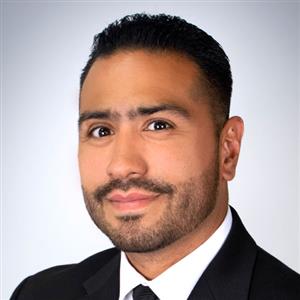As an investment portfolio manager, I’ve spent decades helping clients build wealth, manage risk, and plan for the future, but nothing tests your financial philosophy quite like applying it to your own family. With one child just out of college and starting a first job and another just beginning the undergraduate journey, I’ve had a front-row seat to the emotional and economic rollercoaster of college funding.
My goal isn’t just to fund college—it’s to raise adults who understand the value of money, the weight of choices, and the joy of independence.
Financial planning isn’t just about spreadsheets and asset allocation—it’s about legacy, values and preparing our children for a world where student loan debt looms large and financial literacy is more critical than ever.
Back to school
College today is more expensive than ever. Tuition, housing and fees have outpaced inflation for decades. The average student loan debt for graduates in the U.S. hovers around $30,000, and many families feel caught between wanting to give their children a debt-free start and preserving their own retirement security.
For me, the challenge was twofold:
- How do I give my children meaningful financial support without removing their sense of responsibility?
- How do I use my investment expertise to create a strategy that’s both tax-efficient and emotionally intelligent?
Using a mix of investment tools tailored to each child’s stage and personality, I created a plan that answered both of these questions.
1.529 College Savings Plans
These are the backbone of most college savings strategies. I started contributing when my kids were toddlers, and the tax-free growth has been a powerful ally. For my younger child, I’ve kept the portfolio slightly more aggressive, while my older child’s 529 was rebalanced to preserve capital as graduation neared.
2. Custodial Accounts (UGMA/UTMA)
These accounts allowed me to gift assets to my children while retaining control until they turned 18 or 21. I used these for non-educational expenses—like helping my older child buy a used car and supporting a summer internship abroad.
They’re not ideal for financial aid calculations, but they’re great for teaching kids how to manage real money.
3. Roth IRAs
Once my older child started working, I encouraged him to open a Roth IRA or use his company’s Roth 401(k). Teaching your kids to save for retirement—starting already with summer jobs as lifeguards and ice cream shop workers—helps to build the good financial hygiene that will benefit them throughout their life.
4. Brokerage Accounts
For flexibility, I maintained a taxable brokerage account earmarked for education. This allowed me to invest in ETFs and dividend stocks that could be tapped for unexpected costs or opportunities.
An investment portfolio should evolve over time and always reflect wherever you are at in your life stage. Here are some examples that I had in mind while creating a well-balanced portfolio meant for educational goals:
In the early years:
-
- Automate monthly contributions to 529s
- Focus on growth-oriented investments
- Introduce basic money concepts through allowance and chores
During high school:
-
- Rebalance portfolios for liquidity
- Discuss FAFSA and financial aid strategies
- Encourage part-time work and saving
During college:
-
- Use 529 funds strategically to preserve aid eligibility
- Budget together each semester
- Talk openly about debt, credit cards and lifestyle choices
After graduation:
-
- Help set up retirement accounts
- Match Roth IRA contributions
- Encourage saving for long-term goals like travel, housing and entrepreneurship
Giving money is easy. Giving wisdom is harder.
I’ve learned that the most meaningful gifts aren’t just financial—they’re educational. Matching savings, setting goals and having honest conversations about debt and responsibility have been more impactful than any check I’ve written.
I’ve also had to resist the urge to “fix” everything. My older child took out a small student loan to cover additional expenses. I could’ve paid it off immediately, but instead, we created a repayment plan together. It taught discipline and pride.
College savings isn’t just about avoiding debt—it’s about building a foundation for lifelong financial health. Start early if you can. Be flexible if you didn’t.
As a portfolio manager, I’ve always believed in the power of compounding. But as a parent, I’ve come to believe in the power of conversations, too.
